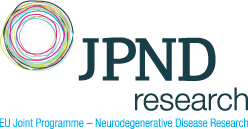<< back





A7HD – Early effects of ABCA7 dysregulation in Huntington’s disease
National funding: RCN (Norrway), BMBF (Germany), MEYS (Czechia), ANR (France), LZP (Latvia), CSO-MOH (Israel), SRC (Sweden)
planned 2025-2028
![]()
![]()
![]()
![]()
![]()
![]()
![]()
![]()
Coordinator:
Jens Pahnke, University of Oslo, Norway
Partners:
David Friedecký, Palacký University Olomouc, Czechia,
Ondřej Soukup, University Hospital Hradec Kralove, Czechia
Kamil Musílek, University of Hradec Kralove, Czechia
Baiba Jansone, University of Latvia, Latvia
Matias Zurbriggen, University of Düsseldorf, Germanny
Jörg Hanrieder, University of Göteborg, Sweden
Fabien Gosselet, Universite d’Artois, France
Dan Frenkel, Tel Aviv University, Israel
Tatyana Gurevich, Sourasky Medical Center, Israel
Collaborators:
Jacob Gildenblat, Deepathology.ai Ltd., Ra’anana, Israel & Pahnke Lab
Tuula Nymann, University of Oslo / Oslo University Hospital, Norway & National Advanced Proteomics Infrastructure (NAPI)
Abstract:
Genetically determined diseases show large variations in onset, disease progression, severity, and gender. The molecular mechanisms by which this variation occurs are often unclear and common modulatory pathways have been proposed. Neurodegenerative diseases (NDs) with repeat expansions, such as Huntington’s disease (HD) and several ataxias are determined through specific genetic alterations, where disease severity generally correlates with the length of the repeats. Despite this correlation, we see impressive variation in age of onset, gender and severity, as well as disease progression, depending on each individual patient.
Alzheimer’s disease (AD) comprises nowadays a group of several pathology-related and onset-related disease subtypes, with a genetic and a sporadic form being the most prominent entities. In AD, the smallest group of patients (<1%) is genetically determined through disease-triggering mutations. However, during the past decades we have learnt a lot about disease onset, progression and its modulation through metabolic and inflammatory mechanisms. Different mechanisms facilitated by members of the ABC transporter superfamily have already been described experimentally also by us, before these have been confirmed and acknowledged in large GWAS studies as important disease modulators in AD, including the lipid transporters ABCA7, and lately ABCA1. ABC transporters
play an important role for the transport of metabolites, compounds, nutrients, ions, and toxins across the plasma membrane, endomembrane systems, or at the brain’s barriers. ABCs are important regulators of the homeostasis and reactors on dys-homeostatic conditions and are found in all cell types of the CNS. Recently, we have generated and extensively characterized new mouse models to extent our investigations on ABC transporter A7 function towards HD (zQ175dn and inducible, humanised ABCA7flx transporter line). When the function of ABCA7 in zQ175dn mice in knocked out, we detect a significant delay in disease onset in a sex-dependent manner: female mice are fully rescued until the end of the experiment at 57 weeks of age, whereas male mice show a significant delay of the disease course for more than 10 weeks. These findings are the first to link ABCA7 functional modulation with HD onset and severity and pose ABCA7 as an important regulator for NDs in general. Preliminary analysis of the potential mechanisms underlying these early modulating effects link ABCA7-mediated lipid and cholesterol transport to anabolic hormonal effects in the brain.
The A7HD consortium will therefore investigate early ABCA7-related key regulatory effects and compensatory mechanisms in the CNS and at the BBB using new innovative technologies based on the already available competence of its members. In detail, A7HD will concisely investigate in vitro and in vivo how ABCA7 modulates cholesterol and lipid metabolism with special emphasis on sex-dependent, anabolic hormone regulation (steroids, insulin) in HD i) by using light-modulatory ABCA7 transporter organoid and single entity cell cultures from human HD iPSC and inducible mouse models (glial cultures, mixed neuronal glia cultures, BBB cultures), ii) by using extensive available metabolomics, lipidomics, and proteomic assessments of the inducible animal models at early points in disease development with mass spectrometry imaging (MSI) in a location-specific manner, and confirmative MS, iii) by using specific interference and induction experiments of key regulators of the anabolic, cholesterol and steroid metabolic pathways in vitro and in vivo, and iv) assessment of patient material. We will also employ up-to-date, new digital technologies (ML/AI) provided through a long-term collaboration with an external industry partner to segment and analyse the large datasets from MSI and MS experiments including target identifications. The consortium comprises a unique collection of leading groups in their fields under the coordination of a leading expert in the field of NDs and ABC transporters. The results will be instantly transferred to our consortium members working with HD patients to prove and verify the experimental findings. The findings of your project will help to develop future preventive and therapeutic approaches that will aim to slow down or stop HD onset and evolution. The gained knowledge from this project will have important implications for the field of NDs as whole.
Resources / Links:
Pahnke lab
Friedecky lab
Gosselet lab
Frenkel lab
Nyman OUS core facilty – NAPI
Soukup lab

